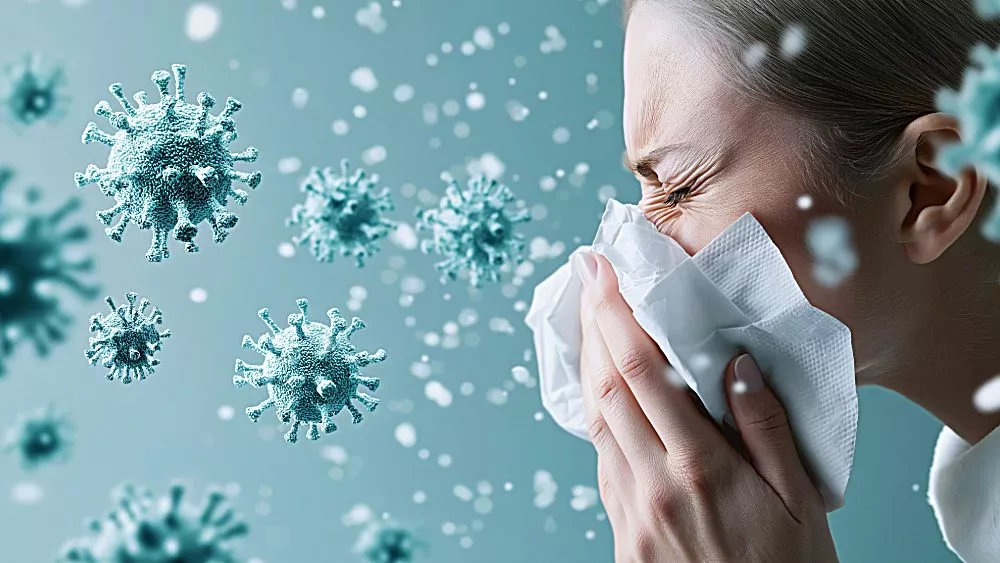SPRINGFIELD/CHICAGO – The Illinois Department of Public Health (IDPH) announced that after a one-week dip, the state’s overall respiratory illness level has ticked up again from Moderate to High, driven by a notable increase in emergency department (ED) visits and hospital admissions for flu.
While data for ED visits and hospital admissions for the week ending January 25 show that COVID-19 and RSV are declining, it indicates the flu is circulating more widely. There are three times as many hospital admissions for flu as there are for COVID-19, with 4.6% of admissions attributed to flu, with 1.6% to COVID-19 and 0.7% for RSV.
Almost 20% percent of ED visits were for acute respiratory illness, a catchall category that includes flu, COVID-19 and RSV plus other respiratory conditions. Of those, 7.8% were attributed to flu, 1.6% to COVID-19 and 0.7% to RSV.
“IDPH continues to closely monitor data on seasonal viruses during this respiratory season,” said IDPH Director Dr. Sameer Vohra. “Flu continues to circulate widely across Illinois. I recommend that all those over 65, very young children, individuals with chronic disease, and those who are immunocompromised, use all the tools at their disposal to prevent exposure. If you do develop flu-like symptoms, contact your health care provider and seek treatment right away. Antiviral medication is most effective if initiated less than 48 hours after your symptoms begin.”
The state’s overall respiratory activity level as calculated by the CDC moved up to High in late December but dipped to Moderate in January for one week before ticking up to High again in the most recent week, driven by increasing rates of flu. The five CDC respiratory activity levels are designed to help people understand the extent of respiratory illness activity in their area. They are divided into Minimal, Low, Moderate, High, and Very High and are based on data that captures a broad range of diagnoses from emergency department visits for respiratory illnesses, from the common cold to severe infections like influenza, RSV and COVID-19.
For those who are unvaccinated, public health officials note that it’s not too late to get vaccinated. It takes about two weeks for vaccinations to provide their full level of protection. Getting shots now will offer protection through the cold and flu season that lasts into the spring.
Director Vohra recommends that anyone feeling symptoms of respiratory illness – such as a fever, runny nose, sore throat or cough – consider getting tested and treated early in the course of their illness, especially if they are at risk for serious illness or spreading it to someone who is at risk of serious illness. Those who are ill should avoid spreading germs to others by self-isolating (i.e. staying away from others when they are ill) or wearing a mask if unable to isolate.
Sadly, the IDPH Respiratory Illness Dashboard has recorded five pediatric deaths this season from flu, with three from RSV and one from COVID-19 and RSV. These deaths are a stark reminder of the importance of vaccinations for children and of the risk of serious illness from these largely preventable seasonal illnesses.
IDPH has posted two helpful new FAQ documents on its website providing the latest guidance on vaccinations and how to get tested and treated for seasonal illnesses. In addition, the CDC has created a new Respiratory Illness Data Channel that provides nationwide county specific information that would be valuable for anyone planning to travel out of state.
The FDA and CDC have approved new vaccines for COVID-19 and flu and they have updated who can receive the RSV vaccines. The new COVID-19 vaccines and flu shots are recommended for everyone over the age of 6 months. The RSV vaccine is recommended for everyone 75 years and older and those between 60-74 years who are at risk for serious illness. Those who received an RSV shot last winter, do not need another one at this time, according to the CDC. Those in the late stages of pregnancy are advised to get the RSV vaccine designed to protect newborns. Eligible newborns whose mothers have not received the RSV vaccine should receive nirsevimab between October and March.
For COVID-19, treatment must be prescribed by a healthcare provider and started within 5–7 days after symptoms appear. Treatment is strongly recommended for those who are over 65 or at higher risk for severe illness. Some Illinoisans should be eligible to access free oral antivirals through the Paxcess and Merck Helps programs.
Antiviral treatments for flu are most effective when given within 48 hours of starting to feel ill and are only available by prescription. Older adults, young children and those who are pregnant or have certain underlying conditions are at risk for complications and should contact a healthcare provider to be assessed for the need for treatment as soon as possible.
You can find locations that perform COVID-19 tests in person at no cost near you by using the testing locator for the federal ICATT (Increasing Community Access to Testing) program.
The new vaccines are widely available at pharmacies and through hospitals, and community health clinics. The major pharmacy chains allow you to make an appointment online to get a shot.
For help finding a provider of vaccines near you, go to www.vaccines.gov. Vaccine information is also available for Illinoisans who are uninsured or underinsured, and for children eligible for the Vaccines for Children program, through IDPH’s Vaccine Locator Dashboard.
Adults without insurance can also check with their local health department for options or contact a free and charitable clinic or a Community Health Center.





